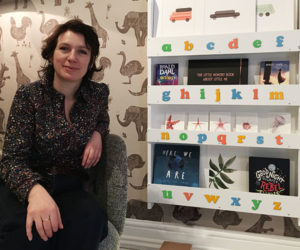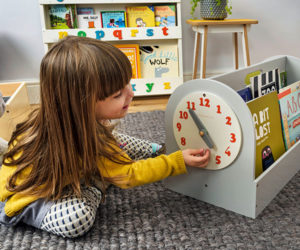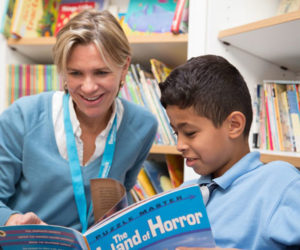7 Guidelines for Building a Home Library in Your Apartment
By Jeremy Steckler
April 22, 2024
Living in an apartment can make it challenging to display all your books cohesively and
artistically. Sure, you can always just get one bookshelf to display them on, but where’s
the fun in that? For those with a home, whether it be renting in downtown Seattle or
owning in the suburbs of Edmonds, it’s easier to dedicate a single room to building a
home library. However, folks in an apartment need to learn how to be economical with
their space, requiring more creative ways of displaying books. So, how do you optimize
your space to create the ultimate bookworm’s haven?
1. Find your perfect bookshelf
The bookshelf. When you think of creating a home library, that’s usually what comes to
mind. It’s a staple of building a home library, but there’s a lot more to selecting a
bookshelf than it may seem. “As someone who’s lived in a studio apartment for nearly
10 years in Los Angeles and is a book collector, I highly recommend thrifting or finding a
bookcase that’s tall versus wide to give you the maximum amount of space without
taking up a lot of room. You can also install shelves as well to have more off-the-ground
storage,” recommends Lauren Scott, creator of travel and lifestyle blog Freedom Not
Fate.
If you have the luxury of altering the structure of your space, Lauren brings up a great
idea about installing shelves into the walls for your books. Author and book lover Katy
Leen seconds this idea, “I confess to being attracted to flats with built-in shelves that I
immediately fill with books interspersed with treasured mementos and framed photos.
Having books on display has the added bonus of creating meaningful connections
because books are perfect conversation starters when company drops by, offering a
wonderful way to share thoughts about the ideas, authors, and stories that touch us and
bring a spark of beauty to our lives and homes.”
Stacking your shelves with books can create a sense of overwhelm instead of calm. To
remedy this, try this tip from Cate Gander, writer of Bibliotherapy. “Allow a spine-out row
of books to fill no more than a third to half of your bookshelf, stacking a few books
horizontally to act as bookends. If you have more than one shelf, stagger the books for
maximum visual impact, placing one or two meaningful items like plants or photos in the
vacant part of each shelf.”
Interspersing your books with personal items is a great way to turn a wall of books into
an expression of yourself. Try putting photos of your adventures by your travel books, or
including other mementos to spice up the design.
2. Get your kids a bookshelf
If you’ve got little ones at home, creating a space for them to enjoy their own collection
is a great way to instill the love of reading into your child at a young age. The Tidy
Books bookshelf is a great option that allows your child to see the covers of their books
all at once. “I wanted a display that accommodates books of all shapes and sizes and
one that was designed with kids’ independence in mind,” says Geraldine Grandidier,
founder of Tidy Books. “I wanted my bookcase to not be about the bookcase but about
the books.”
3. Let your books live with you
If you’re looking for a more adventurous way of building a home library, or if your books
are overflowing your shelves, try freeing your books to live in your space with you.
Kitty Felde, host of the Book Club for Kids podcast, has plenty of advice on how to live
among your books. “At our house, there are bookshelves in every room, as well as a
reading nook. But why not tuck books into unexpected places? If it’s out of sight, it’s out
of mind. So how about a stack of books within reach of a bathtub for a relaxing read;
colorful picture books in toy boxes as an alternative to trucks and Legos; or a book
tucked into a kitchen cupboard, next to a box of breakfast cereal? Who says books have
to stay on shelves?”
The idea of freeing your books to live fully within your space is one shared among many
collectors and book lovers. “Books should be an integral part of your life and this means
not just a reading room but in many areas of your living space. This could mean
selected shelves in the living room for favorites and special editions, space in the
kitchen for cookbooks, and ideally, a reading nook or study where all the rest of your
books can be carefully organized in a variety of ways to suit your moods and activities,”
says Danielle Bruckert, editor of Free Kids Books.
Creating little mini-libraries throughout is another great way of displaying your titles. “For
more visual interest, create stacks of three to five books to display throughout your
apartment. You can organize the stacks by theme, genre, or color. Each stack
becomes a chance to read or reread a title from your collection. As you walk around
your apartment, you will be reminded of your passions and interests. Your guests will
get a glimpse of your personality,” advises Nicole A. Johnson of social enterprise
Baltimore Read Aloud which focuses on promoting and selling diverse books for
children and adults. Jenna Spencer, co-owner of The Last Bookstore, seconds this idea,
“Build up or stack books to make side tables or create mini-libraries throughout your
home, one in every room.”
When creating mini-libraries throughout your apartment, keep in mind which books you
feel comfortable sharing with others. “How you ‘expose’ your home library to visitors is a
little soul-revealing,” says Christine Longmuir of Two Rivers Bookstore. “For instance,
poetry books are an intimate, secret joy for me that I keep in the bedroom. On the other
hand, I also have a cookbook problem. Those books are flamboyantly displayed in
categories: vegetarian, vegan, general, and food essay. Decide what to reveal to any
guest and arrange them lovingly.”
4. Build yourself a reading nook
If you have the space, energy, and vision, a reading nook can be a great way to
organize your books and give yourself a space to partake in your collection. Danielle
Bruckert loves the reading nook she’s built, making sure to include all tools necessary
for virtual readers. “In a reading room, it is important to also have access to your digital
readers – chargers or mountings for example to make it easy to settle down to a good
ebook, which we should not forget. If you have children don’t neglect to make space for
them too, both in the reading nook and by ensuring that there are bookshelves in their
rooms.”
When making your perfect reading nook, the right furniture matters. “Whether it’s a chair
or a couch, make sure it’s comfortable for reading. Your reading spot should be inviting
and surrounded by things you love,” shares Jenna Spencer of The Last Bookstore.
You also don’t have to limit yourself to just one reading space as Jenna Spencer
suggests. “Consider adding cozy reading nooks tucked in corners, under stairs, and in
communal areas too,” she says. “Not cozy enough? Plants make instant privacy walls
and enhance the oxygen throughout your home.”
Consider incorporating aromatherapy or crystals into your space to create a calming
environment. Claire Potter, manager of New Renaissance Bookshop, can attest to the
transformative power of these elements. “I recommend incorporating salt lamps for their
soft, stress-reducing glow,” she says. “You can further elevate the ambiance with
aromatherapy using essential oil diffusers or scented candles, infusing the air with
fragrances such as cedar, sandalwood, or jasmine. I also like to integrate crystals like
amethyst, citrine, or rose quartz to enhance the space with their natural beauty and
positive energy.”
5. Organize your collection however makes sense for you
There are nearly infinite ways to organize your books, but it all boils down to what works
best for you. “The best way I remember a book is by its cover, which is why arranging
my books by color blocking is the most efficient way for me to organize,” shares Jennifer
Caloyeras, host of the podcast Books Are My People. “My floor-to-ceiling bookshelves
are separated by a large entryway. I keep nonfiction on the left side and fiction on the
right. From there, I arrange my books in rainbow order with the black and white ones
anchoring the shelves at the bottom. This method not only makes it easy to locate
books but creates a visually stimulating environment. I place books both horizontally
and vertically and each color zone becomes a canvas for curated knickknacks.”
Elizabeth Hazen of The Ivy Bookshop seconds this way of organizing books at home.
“One of our favorite ways to display home libraries is by color. This allows books to
become not only significant objects in and of themselves but also decorations to
brighten a room. The books can be arranged in rainbow-order or any pattern that
pleases the eye.”
If color blocking isn’t your thing, maybe organizing by genre makes more sense. “At
Annie Bloom’s Books, we separate our sections by genre and keep them alphabetized
by author,” shares Michael Keefe, publicist and events coordinator with Annie Bloom’s
Books. “At home, I also separate my bookshelves by genre. Then I organize more
aesthetically, by placing the tallest books at either end of a shelf and the shortest in the
middle, creating a graceful sweep across the shelf. As we do at Annie Bloom’s, I also
make sure to face out a few books with appealing covers, to catch the eye.”
When organizing your shelves, it’s helpful to get serious about the purpose of your
bookshelves to frame the process. What do you want to achieve when you look at your
library? “You can display your past using books you’ve collected over the years,
keepsakes, and personal memorabilia,” shares Jenna Spencer. “Or would you rather
your library spark ideas and creativity with cutting-edge art and new design books? No
matter your goal, organize your books in a way that makes them easy to access and a
joy to browse, whether by author, genre, size, or even color.”
6. Grow your shelves
Every book lover loves the opportunity to grow their collection and experience genres
and stories they might not have explored. “If you are bored with your book collection,
ask yourself ‘What genres or experiences are represented in my collection? What
voices or points of view are missing?’” suggests Nicole A. Johnson. “To mix it up,
consider a ‘Say Yes Day’ the next time you visit your local library or bookstore. Enter a
section that you tend to avoid and say yes to at least one unfamiliar title or author. Take
a chance, and you may discover a new point of view or an unexpected adventure.”
Sometimes you feel drawn to a book just because of how it looks or feels. Consider this
permission to display that book even if you haven’t gotten around to reading it or don’t
even have the intention of reading it. “You don’t need to read every book to include it in
your library,” advises Jenna Spencer. “Sometimes, the beauty of the book is the book
itself — its cover, the paper, or the craftsmanship. If you come across books that look
and feel special to you for some reason or another, even if you’ll never read them,
include them in your library anyway. You’ll appreciate them every time you walk by.”
Blank shelves are the enemy of a good bookshelf. If you’ve started with the intention of
growing your collection but don’t want empty shelves staring at you, think about
purchasing some display books so you can be extra intentional about what you include
in your space. “Consider dealing with a used bookstore like The Iliad to buy a large
quantity of inexpensive books – we always keep boxes of decorator books ready to go,”
shares The Iliad Bookshop.
If you already have a collection of books to fill your shelves and want to keep them in
pristine condition, visit a local bookstore like The Iliad to purchase Mylar jacket sleeves
for your books. Above all, heed the advice of the Iliad and follow your heart when it
comes to starting this journey.
7. Thin out your collection
Although growing your collection is a joy, a necessary task to make room for your new
books is thinning out your shelves. “If you are stumbling over book stacks, consider
editing your collection,” says Nicole A. Johnson. “If you have a hard time purging,
decide how many books you want to own. Start removing titles to get closer to your
target number. Set aside books that you can gift to friends and family or donate to a
local charity. Damaged and outdated books can be recycled so that the remaining
books can be displayed as a reflection of your interests and passions”
Whether you’re living in a studio apartment in San Diego or renting in Dallas, we hope
these tips and tricks have helped in guiding how you display your books. Enjoy the
journey of creating your own library, and happy reading.




